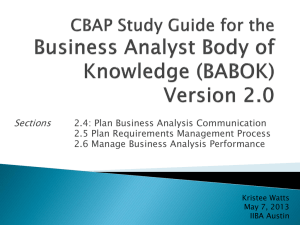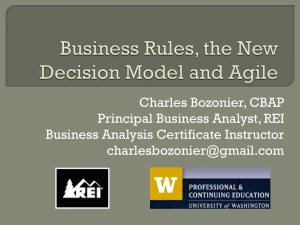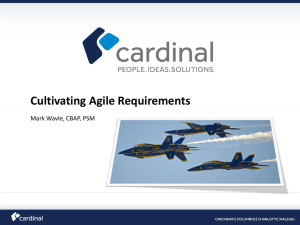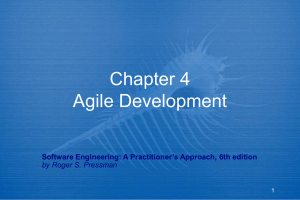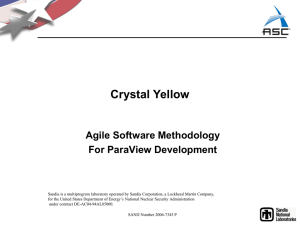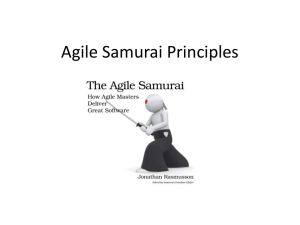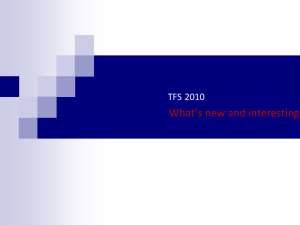11-1-User stories
advertisement
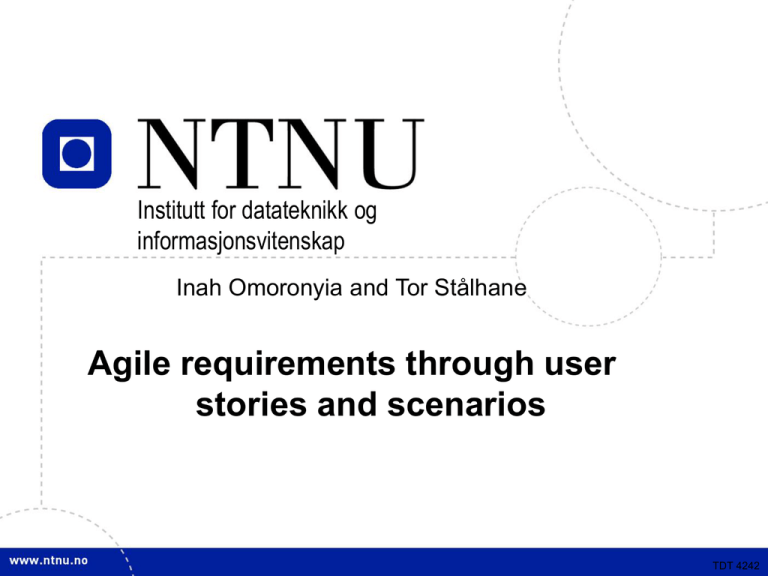
Institutt for datateknikk og informasjonsvitenskap Inah Omoronyia and Tor Stålhane Agile requirements through user stories and scenarios TDT 4242 TDT 4242 Agenda •Key principles of agile requirements •User stories •INVEST •Prioritizing stories •User story mapping •Challenges •Conclusion TDT 4242 Key Principles for Agile Requirements • • • • • • • Active user involvement is imperative Agile teams must be empowered to make decisions Requirements emerge and evolve as software is developed Agile requirements are ‘barely sufficient’ Requirements are developed in small pieces Enough’s enough – apply the 80/20 rule Cooperation, collaboration and communication between all team members is essential Requirements are a Communication Problem • Written requirements – – – – – – can be well thought through, reviewed and edited provide a permanent record are easily shared with groups of people time consuming to produce may be less relevant or superseded over time can be easily misinterpreted • Verbal requirements – – – – – instantaneous feedback and clarification information-packed exchange easier to clarify and gain common understanding easily adapted to any new information known at the time can spark ideas about problems and opportunities User Stories seek to combine the strengths of written and verbal communication, where possible supported by a picture. * Kent Beck coined the term user stories in Extreme Programming Explained 1st Edition, 1999 What is a User Story? • A concise, written description of a piece of functionality that will be valuable to a user (or owner) of the software. • Stories are: – User’s needs – Product descriptions – Planning items – Tokens for a conversation – Mechanisms for deferring conversation User Story Cards have 3 parts 1. Description - A written description of the user story for planning purposes and as a reminder 2. Conversation - A section for capturing further information about the user story and details of any conversations 3. Confirmation - A section to convey what tests will be carried out to confirm the user story is complete and working as expected User Story Template – 1 - As a [user role] I want to [goal] so I can [reason] As a [type of user] I want to [perform some task] so that I can [reach some goal] Example: • As a registered user I want to log in so I can access subscriber-only content User Story Template – 2 • Who (user role) • What (goal) • Why (reason) • gives clarity as to why a feature is useful • can influence how a feature should function • can give you ideas for other useful features that support the user's goals User Story Description Steps: • Start with a title. • Add a concise description using the templates. • Add other relevant notes, specifications, or sketches • Before building software write acceptance criteria (how do we know when we’re done?) Example: Front of Card Example: Back of Card How detailed should a User Story be? Detailed enough • For the team to start working from • To establish further details and clarifications at the time of development. INVEST in Good User Stories • Independent – User Stories should be as independent as possible. • Negotiable – a User Story is not a contract. It is not a detailed specification. It is a reminder of features for the team to discuss and collaborate to clarify the details near the time of development. • Valuable – User Stories should be valuable to the user (or owner) of the solution. They should be written in user language. They should be features, not tasks. • Estimatable – User Stories need to be possible to estimate. They need to provide enough information to estimate, without being too detailed. • Small – User Stories should be small. Not too small and not too big. • Testable – User Stories need to be worded in a way that is testable, i.e. not too subjective and to provide clear details of how the User Story will be tested. Prioritize stories in a backlog • Agile customers or product owner prioritize stories in a backlog • A collection of stories for a software product is referred to as the product backlog • The backlog is prioritized so that the most valuable items have the highest priorities 15 User Story Mapping – 1 • User Story Mapping is an approach to Organize and Prioritize user stories • Unlike typical user story backlogs, Story Maps: – make the workflow or value chain visible – show the relationships of larger stories to their child stories – help confirm the completeness of your backlog – provide a useful context for prioritization – plan releases in complete and valuable slices of functionality. 16 User Story Mapping – 2 Spatial arrangement: – By arranging activity and task-centric story cards spatially, we can identify bigger stories – Arrange activities left to right in the order you’d explain them to someone when asked the question: “What do people do with this system?” time 17 User Story Mapping – 3 Overlap user tasks vertically if a user may do one of several tasks at approximately the same time If in telling the story I say the systems’ user typically “does this or this or this, and then does that”. “or” signal a stacking vertically, and “then” signal stepping horizontally. time 18 User Story Mapping – 4 The map shows decomposition and typical flow across the entire system. time Below each activity, or large story are the child stories that make it up Reading the activities across the top of the system helps us understand end-to-end use of the system. 19 User Story Mapping - prioritizing Prioritizing based on product goal – Product goals describe what outcome or benefit is received by the organization after the product is put into use – Use product goals to identify candidate incremental releases, where each release delivers some benefit 20 User Story Mapping - prioritizing – Create horizontal swim-lanes to group features into releases – Arrange features vertically by necessity from the user’s perspective – Split tasks into parts that can be deferred till later releases – Use the product goals to identify slices that incrementally realize product goals. less optional more optional 21 optionality necessary From user story to test case We can also use templates to write test cases for the use stories. One tool that employs such templates is CUCUMBER. The template is as follows: Scenario: a short description of the test scenario Given: test preconditions When: test action – input Then: test result – output And: can be used to include more than one precondition, input or output. CUCUMBER example Scenario: memory BIT When: we have inserted a memory fault And: run a memory BIT Then: the memory fault flag should be set And: the system should move to the error state Agile – Challenges • Active user involvement can be demanding on the user representative's time and require a big commitment for the duration of the project. • Iterations can be a substantial overhead if the deployment cost are large • Agile requirements are barely sufficient: – This can mean less information available to new starters in the team about features and how they should work. • Usually not suitable for projects with high developer turnover with long-term maintenance contract • Arguably not suitable for safety critical systems. 24 User Stories Summary • User Stories combine written and verbal communications, supported with a picture where possible. • User Stories should describe features that are of value to the user, written in the user’s language. • User Stories detail just enough information and no more. • Details are deferred and captured through collaboration just in time for development. • Test cases should be written before development, when the User Story is written. • User Stories should be Independent, Negotiable, Valuable, Estimatable, Small and Testable.



